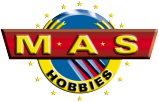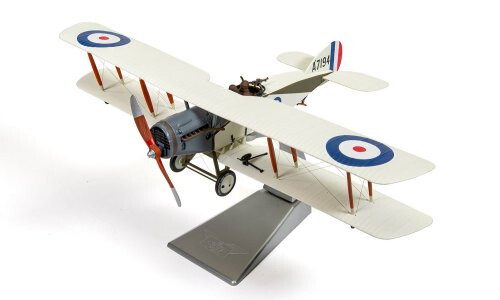Corgi AA28803 1/48 Bristol F-2B Fighter, No.111 Sqn, Egypt, October 1917
Overview:
Bristol F-2B Fighter, A7194, Capt. Arthur H Peck & Capt. John JL Williams, No.111 Squadron, Egypt, October 1917.
With the aeroplane becoming such a vital weapon during the Great War and with the Royal Flying Corps' Royal Aircraft Factory BE2c reconnaissance aircraft suffering so badly at the hands of the German Fokker Eindecker, an effective replacement in the armed reconnaissance/fighter role was desperately needed. At the Bristol Aeroplane Company, Chief Designer Frank Barnwell was determined that he was going to produce such an aircraft and he was uniquely qualified to deliver on his promise. A qualified Royal Flying Corps pilot with combat flying experience over the Western Front, he knew what qualities the new aircraft must possess and perhaps of even greater importance, what RFC crews would need from it. The new aircraft must be capable of effectively defending itself from enemy attack, but also to possess the ability to turn the tables in such circumstances and make any Luftstreitkräfte pilot regret their decision to tangle with the new British aircraft.
The prototype Bristol Type 12 (F.2A) made its maiden flight on 9th September 1916 and powered by the new 190hp Rolls Royce Falcon I engine, posted impressive performance from the start. A relatively large and purposeful aircraft, suitably impressed War Office officials placed an order for further development aircraft and 50 production aircraft for RFC training units, all of which would eventually be assigned to No.48 Squadron. Following training in the UK, this unit would take their Bristol Fighters across the Channel and make their combat debut in April 1917 at the Battle of Arras.
The new Bristol Fighter, or Brisfit (as it would be referred to by everyone in the Royal Flying Corps) underwent early improvement and modification and would quickly lead to the production of the most capable and ubiquitous version of the aircraft, the F.2B variant. This latest version featured the new, more powerful Rolls Royce Falcon III engine, a 285hp unit which gave the Bristol Fighter and impressive top speed of 123 mph and significantly greater climbing capability, making this an exceptionally capable fighting aeroplane. It would go on to make a significant contribution towards wrestling superiority of the air from the Germans and would remain a competitive combat aircraft for the remainder of the war.
Brand:
Corgi
Barcode:
5063129006563
Scale:
1/48
No posts found

